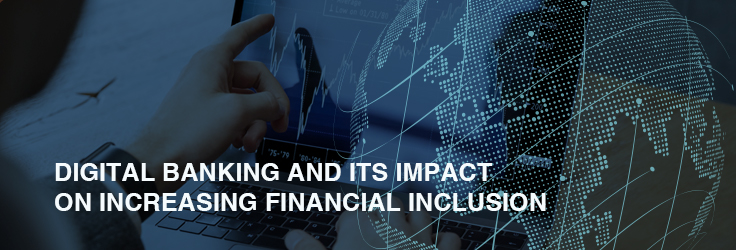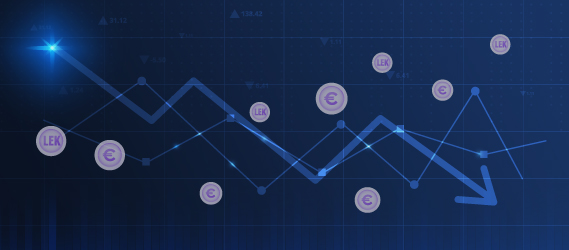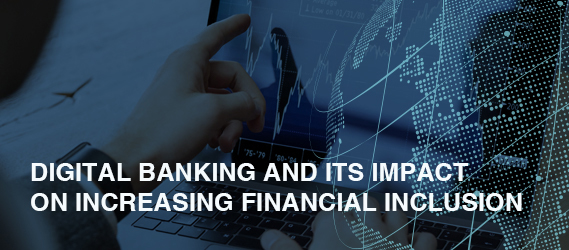
The financial services industry is experiencing technological changes through the introduction of new financial products offered digitally from both banking and non-banking institutions. Developing economies are included in this change that offers them a practical alternative to traditional banks. According to an article published by the United Nations (2016), one of the main goals of digital finance is decreasing poverty levels and increasing financial inclusion. To achieve this goal, G-20 and World Bank have led the initiative of digitalizing the banking system and expanding financial inclusion (GPFI, 2010). Factors that remain to be studied are the problems caused by financial digitalization. Most academics believe that if these issues are addressed, digital finance can be adapted to the needs of individuals, businesses, governments, and the economy as a whole. This increase in adaptability will enable access to financial services for lower income individuals, decrease the costs of financial intermediation, as well as increasing aggregate expenditures for governments (Ozili, 2018).
According to a report by McKinsey, digital finance is described as “financial services offered through mobile phones, the internet and cards” (Manyika et al., 2016). An article by Gomber, Koch and Siering (2017) defines it as the entirety of products, services, technology, or infrastructure, that enable the access to payments, savings and credit facilities through the internet and without needing to visit a branch or dealing with a financial services provider directly. In their report, CGAP (2015) defines digital financial inclusion as the access and use of financial services by underserviced and excluded members of the population. Disregarding the many definitions, three key components exist for each digital financial service: the platform, the agents and the use by clients (CGAP, 2015). To access digital financial services, users are required to have an existing bank account and further, to have funds in that account to make payments or earn revenues through platforms such as phones, computers, and the internet.
Thus, the process of financial inclusion begins with the assumption that excluded and underserviced persons of the population are already in disposal of a type of bank account that grants them the digital access to make financial transactions. Currently, digital finance and financial inclusion have not reached enough segments of the population, suggesting an existing gap between financial availability, accessibility and usage (G20 Summit, 2013).
Expanding financial inclusion indicates to help banks lower costs by reducing lines, paperwork, and documents, thus lowering the overall needed number of bank branches (IFC, 2017). Moreover, depositors will have the opportunity to switch easily between banks. This will increase competition among banks, encouraging them to offer quality services to mitigate the risk of losing clients to their competitors. As digital finance helps lower the amount of physical cash circulating, it would reduce high levels of inflation in countries. This is one of the main advantages for financial and monetary systems’ policymakers and especially necessary for developing economies (GPFI, 2016). Digital finance could also improve the welfare of individuals and businesses alike. Through access to a secure digital platform where they can access funds in their bank account, these clients can carry out transactions at any time (CGAP, 2015). Global remittances are one of the areas that could completely transform through the use of technology (Appaya, 2021). The global average cost of sending these funds in cash form is currently 6.8%. In comparison, the cost of a wholly digital transaction would be 3.3%, thus reducing problems with liquidity.
Despite the aforementioned benefits, digital finance may also prove disadvantageous to increasing financial inclusion. Financial service providers are corporations and as such, they can use digital finance to maximize their profits or profit opportunities. To meet their profit goals, the providers could use marketing tactics aimed at attracting users with average to high income and use less attractive tactics for lower income individuals (Ozili, 2018). This discriminating tactic is used when providers assume that lower income persons are not able to pay the costs associated with the digital platforms, thus lowering financial inclusion for this part of the population. Furthermore, geographical discriminations could pose a problem to digital finance availability. Providers could choose to decrease the provision of digital finance in high risk areas such as rural locations or communities that lack the infrastructure needed for supporting such services. Lastly, prejudices in education could affect the provision of digital financial services. The monetary net value of providing digital finance in lower income and education communities could be small. Based on their own profitability valuations, providers could choose to not focus on the distribution of digital financial services to these communities, establishing them as lacking in the necessary financial literacy to use the digital platforms.
According to a report by McKinsey, digital finance is described as “financial services offered through mobile phones, the internet and cards” (Manyika et al., 2016). An article by Gomber, Koch and Siering (2017) defines it as the entirety of products, services, technology, or infrastructure, that enable the access to payments, savings and credit facilities through the internet and without needing to visit a branch or dealing with a financial services provider directly. In their report, CGAP (2015) defines digital financial inclusion as the access and use of financial services by underserviced and excluded members of the population. Disregarding the many definitions, three key components exist for each digital financial service: the platform, the agents and the use by clients (CGAP, 2015). To access digital financial services, users are required to have an existing bank account and further, to have funds in that account to make payments or earn revenues through platforms such as phones, computers, and the internet.
Thus, the process of financial inclusion begins with the assumption that excluded and underserviced persons of the population are already in disposal of a type of bank account that grants them the digital access to make financial transactions. Currently, digital finance and financial inclusion have not reached enough segments of the population, suggesting an existing gap between financial availability, accessibility and usage (G20 Summit, 2013).
Expanding financial inclusion indicates to help banks lower costs by reducing lines, paperwork, and documents, thus lowering the overall needed number of bank branches (IFC, 2017). Moreover, depositors will have the opportunity to switch easily between banks. This will increase competition among banks, encouraging them to offer quality services to mitigate the risk of losing clients to their competitors. As digital finance helps lower the amount of physical cash circulating, it would reduce high levels of inflation in countries. This is one of the main advantages for financial and monetary systems’ policymakers and especially necessary for developing economies (GPFI, 2016). Digital finance could also improve the welfare of individuals and businesses alike. Through access to a secure digital platform where they can access funds in their bank account, these clients can carry out transactions at any time (CGAP, 2015). Global remittances are one of the areas that could completely transform through the use of technology (Appaya, 2021). The global average cost of sending these funds in cash form is currently 6.8%. In comparison, the cost of a wholly digital transaction would be 3.3%, thus reducing problems with liquidity.
Despite the aforementioned benefits, digital finance may also prove disadvantageous to increasing financial inclusion. Financial service providers are corporations and as such, they can use digital finance to maximize their profits or profit opportunities. To meet their profit goals, the providers could use marketing tactics aimed at attracting users with average to high income and use less attractive tactics for lower income individuals (Ozili, 2018). This discriminating tactic is used when providers assume that lower income persons are not able to pay the costs associated with the digital platforms, thus lowering financial inclusion for this part of the population. Furthermore, geographical discriminations could pose a problem to digital finance availability. Providers could choose to decrease the provision of digital finance in high risk areas such as rural locations or communities that lack the infrastructure needed for supporting such services. Lastly, prejudices in education could affect the provision of digital financial services. The monetary net value of providing digital finance in lower income and education communities could be small. Based on their own profitability valuations, providers could choose to not focus on the distribution of digital financial services to these communities, establishing them as lacking in the necessary financial literacy to use the digital platforms.
Further to the mentioned effects, the true impact and prospects of digital financial services are developments that will be determined only after their execution. The director of the Association of Financial Inclusion, Hanning (2017) has stated that “The adoption of digital finance will have a significant impact not only on financial inclusion, but also inclusive economic growth”. Additionally, Manyika et al. (2016) based on their study conducted on seven countries – Brazil, The People’s Republic of China, Ethiopia, Mexico, Nigeria, India and Pakistan – conclude that digital finance has the potential to garner access to financial services to 1.6 billion people in developing economies. Their study ascertains that the increase and mass usage of digital finance can increase the Gross Domestic Product of developing economies by 6% or $3.7 trillion by 2025, a development equivalent to Germany’s economy. Moreover, more than 95 million new jobs would be created worldwide in all sectors through the increased GDP. As the GDP is one of the main components of the developmental index of the economy, the implementation of digital financial services in the banking sector would contribute to decreasing poverty levels and increasing inclusion in economic growth, to achieve the Sustainable Development Goals. Research director at Cornerstone Advisors, Shevlin (n.d.) has stated that “The challenge for banks isn’t becoming digital, it is providing value that is perceived to be in line with the cost, or better yet, providing value that consumers are comfortable paying for”. Currently, the benefits digital finance provides to lower income individuals are often more valuable to them than the cost paid for access to these services offered by trustworthy and regulated financial institutions such as banks.
Digital finance, through providers of financial technologies, has shown a positive effect in increasing financial inclusion both in developing and developed economies (Ozili, 2018). Expanding financial inclusion allows individuals who previously were financially excluded to invest further in education, to save and to develop businesses. These advantages would contribute to reducing poverty levels and boosting economic growth (Bruhn & Love, 2014). An inclusive financial system is desirable by every member of the system and would offer the opportunity to each individual, but especially lower income ones, to access and move funds, grow capital and reduce risk. On the other hand, there are challenges that digital finance presents to financial inclusion and stability, mainly due to the perception that banks are profit seeking corporations. All in all, financial inclusion in itself is not just a goal, but a way to grow and enable economic development (Appaya, 2021). In conclusion, the expected advantages of digital financial inclusion can only be attained if the cost of accessing the platform is negligible for the lower economic level part of the population.M.Male


